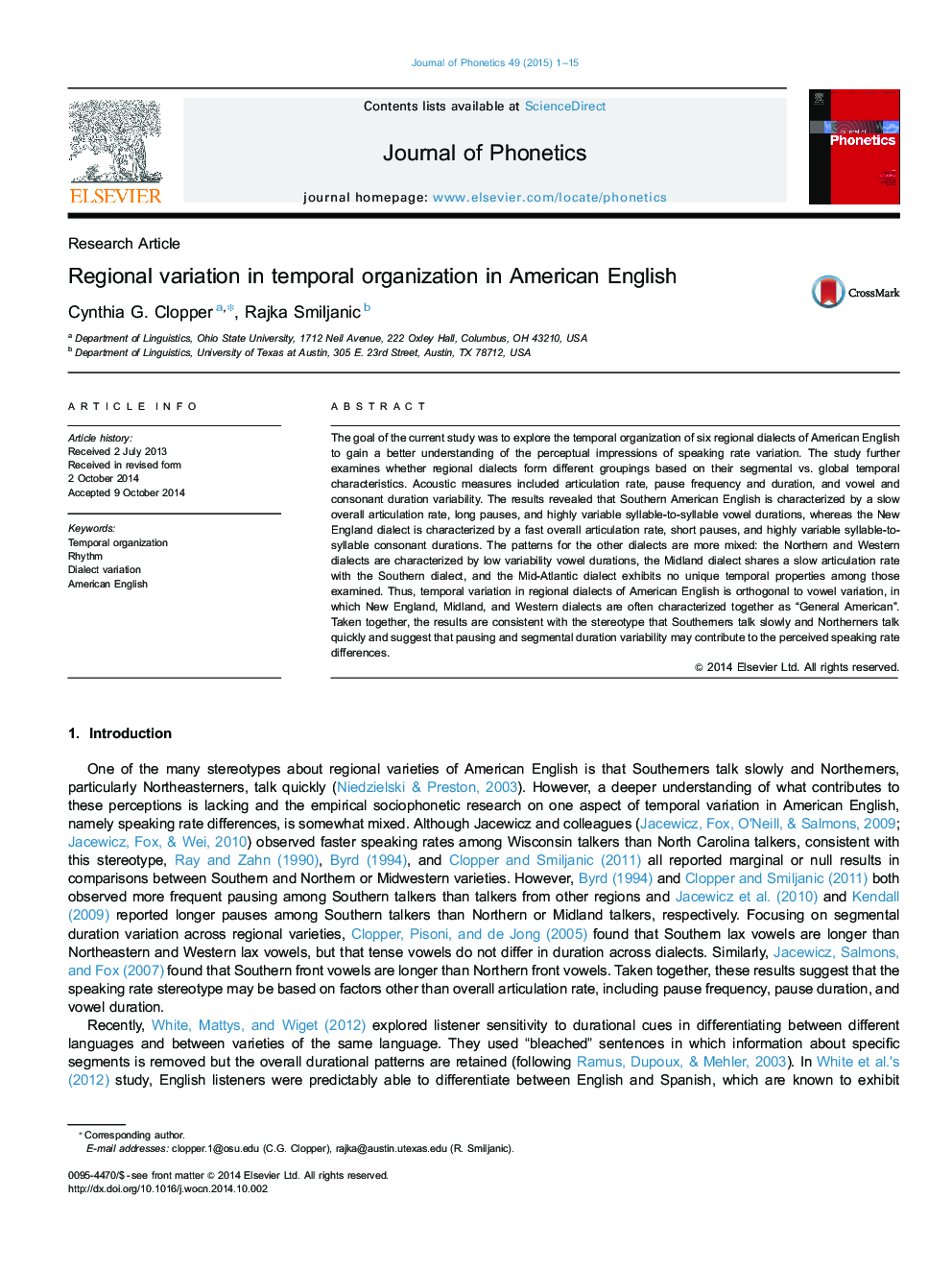| Article ID | Journal | Published Year | Pages | File Type |
|---|---|---|---|---|
| 7532918 | Journal of Phonetics | 2015 | 15 Pages |
Abstract
The goal of the current study was to explore the temporal organization of six regional dialects of American English to gain a better understanding of the perceptual impressions of speaking rate variation. The study further examines whether regional dialects form different groupings based on their segmental vs. global temporal characteristics. Acoustic measures included articulation rate, pause frequency and duration, and vowel and consonant duration variability. The results revealed that Southern American English is characterized by a slow overall articulation rate, long pauses, and highly variable syllable-to-syllable vowel durations, whereas the New England dialect is characterized by a fast overall articulation rate, short pauses, and highly variable syllable-to-syllable consonant durations. The patterns for the other dialects are more mixed: the Northern and Western dialects are characterized by low variability vowel durations, the Midland dialect shares a slow articulation rate with the Southern dialect, and the Mid-Atlantic dialect exhibits no unique temporal properties among those examined. Thus, temporal variation in regional dialects of American English is orthogonal to vowel variation, in which New England, Midland, and Western dialects are often characterized together as “General American”. Taken together, the results are consistent with the stereotype that Southerners talk slowly and Northerners talk quickly and suggest that pausing and segmental duration variability may contribute to the perceived speaking rate differences.
Related Topics
Social Sciences and Humanities
Arts and Humanities
Language and Linguistics
Authors
Cynthia G. Clopper, Rajka Smiljanic,
